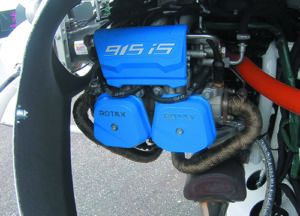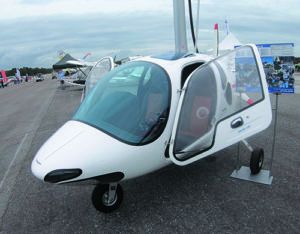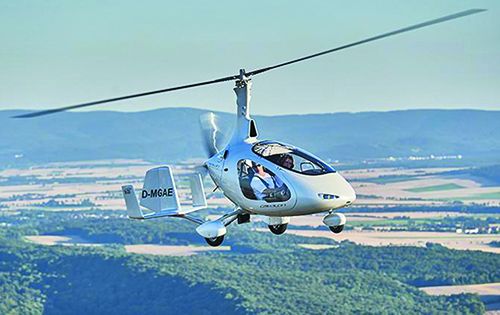The autogyro is sometimes thought to be an American invention—who hasn’t seen a black-and-white photo of the famed Pitcairn PCA-2?—but it actually originated in Spain. And it’s Europe where this aircraft continues to thrive despite the fact that North America is still the largest and richest light aircraft market.
But persistence might be about to pay off. Sales of European-manufactured autogyros are rising modestly in the U.S. and the larger companies are applying new engine technology to make them even more attractive. Heretofore, most of these aircraft found their way to U.S. owners as experimental amateur builts. And while EABs are a growth industry in the U.S., autogyros just never caught the wave.
European-manufactured special light sport airplanes have found a toehold in the U.S. market, but autogyros don’t fit into this niche, mainly because the FAA left them out of the SLSA definition and, until recently, none of the European models were type certificated. But EASA regulations do name a rotorcraft category in the microlight section and that’s what makes it possible to buy and fly fully assembled autogyros in most European countries.
WORKING ON IT
As with electric airplanes, the exclusion of autogyros appears to be accidental. If it came up during discussion of the light sport aircraft and sport pilot rules, it got shuffled off and under the table. According to Dan Johnson of the Light Aircraft Manufacturers Association, that’s about to change, although it will be awhile.

We spoke to Johnson at the Deland Sport Aviation Showcase and learned that the full, formal inclusion of autogyros as light sport aircraft is nearing approval by the FAA. And this is a good place to set the definition straight. In FAA speak, the proper term is gyroplane, not autogyro nor gyrocopter, which was once a registered trademark of Bensen. (It no longer appears to be.) Autogyro was also a registered mark of the Spanish inventor of the type, although it was spelled Autogiro. To further confuse the terminology, the largest manufacturer of this aircraft type is called AutoGyro.
But when the regulation appears, the official definition will be gyroplane. “The latest information is that it’s absolutely still on the table for special light sport gyroplanes, meaning fully built gyroplanes. That’s not been the way it’s been for the last 15 years,” Johnson says. “We’re about as sure as you can be with any government regulation that’s still in the works that this will happen,” he adds.
Johnson says there may be strong underlying demand for gyroplanes because LAMA’s data tracking shows increased sales, all of them in the EAB category. “So imagine what can happen when you don’t have to go through that hoop-jump exercise,” he says.
SWEEPING CHANGE
One overarching development injects a degree of uncertainty over not just gyroplanes, but the survival of light sport aircraft in general. It’s the FAA’s so-called MOSAIC regulatory reform. Encouraged by industry and the success of self-approval by light sport manufacturers, the FAA hopes to establish consensus standards for aircraft far less limited than the narrowly defined light sport category with its 1320-pound weight limit. “That number is going away in the same regulation that will allow fully built gyroplanes. The FAA continues to say it won’t be a weight in the future. It’ll be a formula. They call it a power index,” Johnson says. That means ASTM consensus standards could apply to aircraft up to 3000 pounds or more and possibly with four seats. “The FAA has come to love consensus standards,” Johnson adds, “and wants to apply it to Part 23 airplanes.”
What that means for the budding gyroplane market is unclear and it’s no less muddy for fixed-wing LSAs. Would a heavier, four-place gyroplane excite more sales than a two-seat design? Who knows?
The more compelling question is when all of this is going to happen. It won’t be exactly around the corner, but it won’t be the end of the decade, either.
“There was a congressional mandate when the FAA was reauthorized. They put a time limit on things that needed to happen in order to get that authorization. So they’ve got to meet the deadline now and that’s by the end of 2023,” Johnson says.
That means the final rule has to be in place by then, so to allow for the glacial federal process, NPRMs will have to appear by late 2021 or early 2022 to make the cutoff.
While the new regulation will establish the broad-brush definitions and intent, it will be up to ASTM International to develop the line-by-line detailed standards. Johnson says that organization has traditionally worked quickly and is developing draft standards in parallel to the FAA’s final rule.
SELF HELP
One company that didn’t wait for the FAA’s sclerotic action was the largest gyroplane manufacturer in Europe, Germany’s AutoGyro GmbH. The company has a worldwide presence and in the U.S., its AutoGyro USA outlet has been selling kits and ready-to-fly aircraft and lately more of the latter.
One reason for this is that the company took the unusual—and expensive—step of certifying its products in the primary category, a certification path intended for aircraft used for personal or pleasure use. This means that the company’s gyroplanes can be bought ready to fly and, according to Bob Snyder, of AutoGyro USA, because they meet the weight limits of the light sport aircraft, they can be flown by sport pilots. Or certificated pilots flying under light sport privileges. LAMA’s Dan Johnson says this gives AutoGyro a sales advantage until the FAA finalizes approval of gyroplanes as SLSAs.
After that, we may see a flood of new entrants into the U.S. market. Or not. No one knows what the gyroplane market uptake will be.
But, says Snyder, sales are definitely increasing modestly, confirming what LAMA’s data seems to indicate. “This year, we sold two experimentals. All of the others were type certified,” Snyder said. That amounts to about a dozen aircraft. “Since the announcement of the 915, that’s pretty much all we’ve sold,” he adds, referring to the new Rotax 915 iS engine that is finding considerable traction in the gyroplane market. The 915 versions haven’t been certified yet, but are expected to be within weeks. Snyder says the 915 in a AutoGyro Cavalon is a marriage made in heaven. “It is without a doubt the best flying gyroplane I have ever flown,” he told us.
NEW ENTRIES
At the Deland show, we saw another new entry from a company called Airgyro. It’s similarly equipped with a 915 iS, but is available only as an EAB offering, although LSA is planned. As with fixed-wing aircraft, the higher power—135 HP continuous for the 915 iS—increases climb performance dramatically, but doesn’t do much for cruise. Snyder says the 915 iS-equipped Cavalon climbs at a blistering 2000 FPM. Snyder says a well-equipped Cavalon retails for about $160,000. Curiously, the EAB version is not much less, according to Snyder, if the builder utilizes the company’s builder assist program.

Light sport approval for gyroplanes might not make much difference to AutoGyro, since the primary certification it has pursued removes the barrier to purchase for many buyers. As for training, gyroplanes aren’t difficult to fly, but one corner of the flight envelope can be catastrophic if not understood by the pilot. Lift comes entirely from the rotating rotor disc. It’s powered not by the engine, but by the energy of the relative wind. Negative G maneuvering can steal the rotational energy and put the aircraft into an unrecoverable departure.
Gyroplane privileges require an add-on category rating, whether under the sport pilot rule or a higher certificate. How long does that take?
“It really depends on the person. I have had 10,000-hour corporate jet pilots take 35 or 40 hours. They come from a different environment of looking at the panel and probably never looking out the window,” Snyder says. “But a gyroplane, like a Cub, is big-time, seat-of-the-pants, look out the window and fly it,” he adds. Stick-and-rudder taildragger pilots usually adapt quickly.
“So what I tell everybody is to expect a minimum of 10 hours. There are guys that get it in just a few hours. Most of them are professional pilots,” says. Average? Somewhere between 10 and 15 hours. “I haven’t found anyone that I haven’t been able to teach,” Snyder says.





